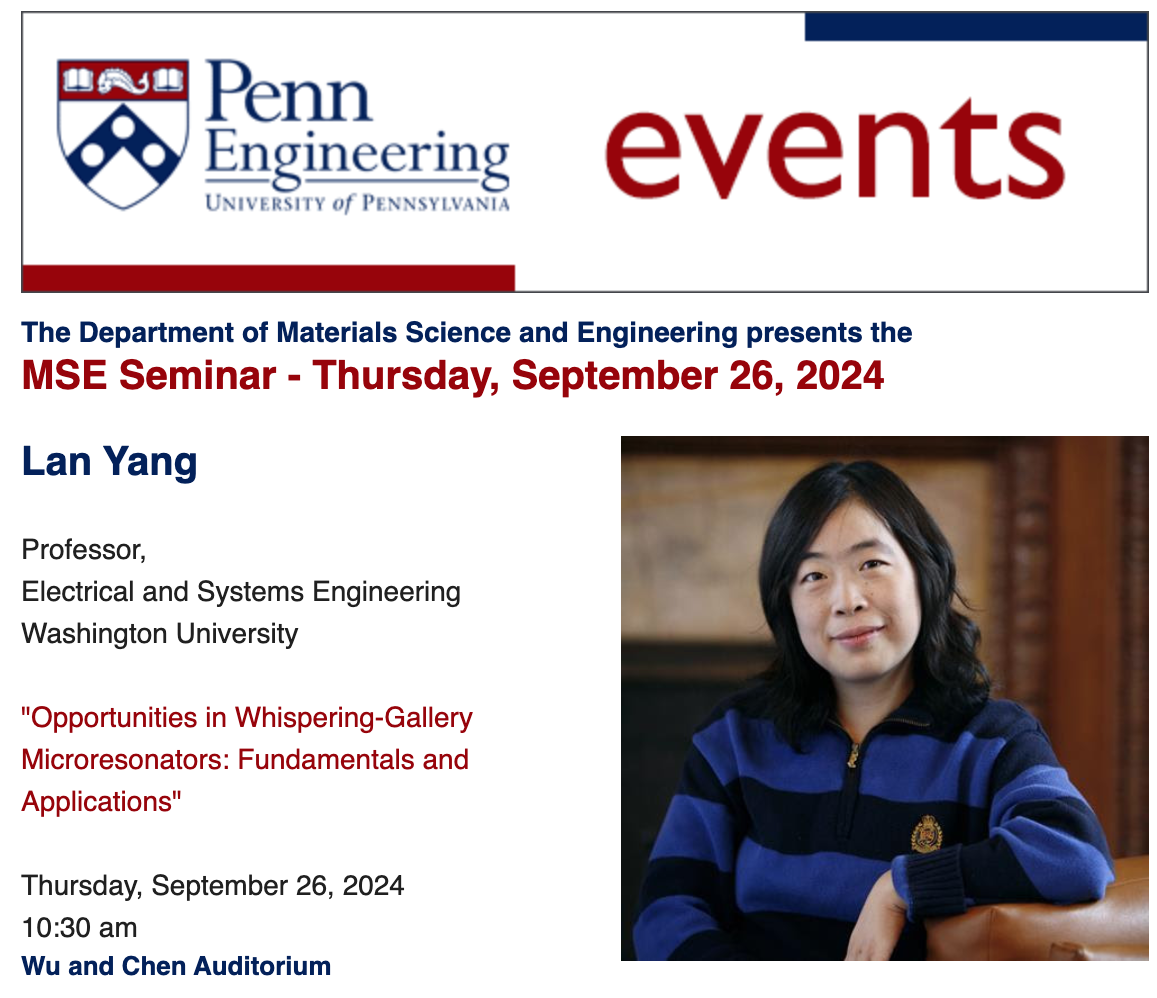“Opportunities in Whispering-Gallery Microresonators: Fundamentals and Applications”
Thursday, September 26, 2024, 10:30 am Location – Wu and Chen Auditorium
Lan Yang, Professor, Electrical and Systems Engineering, Washington University
Abstract: Light-matter interactions form the fundamental basis for numerous phenomena and processes in optical devices. This talk will cover ultra-high-quality (Q) whispering-gallery-mode (WGM) optical microresonators which have an unprecedented capability to trap light in a highly confined volume smaller than a strand of human hair. Light-matter interactions are significantly enhanced in high-quality WGM resonators, creating the potential for a wealth of new scientific discoveries and technological breakthroughs. High-Q microresonators and microlasers provide excellent platforms for both fundamental science and engineering applications; the choices of materials for the photonic resonators enable various opportunities for different applications. This talk will start with the introduction of diverse sensing mechanisms and strategies developed around high-Q microresonators. It will include discussions on ultra-sensitive self-referencing detection and sizing of nanoparticles, including single virions. Various strategies, such as mechanical solitons through optomechanical effects in a microtoroid resonator, a barcode technology based on collective behaviors of multiple resonances, and AI-enhanced target classification, will be introduced for sensing applications with resonators. Furthermore, our recent exploration of fundamental physics, such as non-Hermitian physics in high-Q WGM resonators, have unraveled innovative strategies to achieve a new generation of optical systems enabling unconventional control of light flow. Examples including nonreciprocity in a parity-time (PT)-symmetry resonator system, loss engineering in a lasing system, directional lasing emission at an exceptional point (EP), and EP-enhanced sensing will be presented. To conclude, the applications of resonators in photonic integrated circuits (PIC) will be discussed. Our research discoveries just represent a glimpse of the potential of photonic resonators; there are still many exciting opportunities by leveraging the enhanced light-matter interactions through resonant effects in the future.
